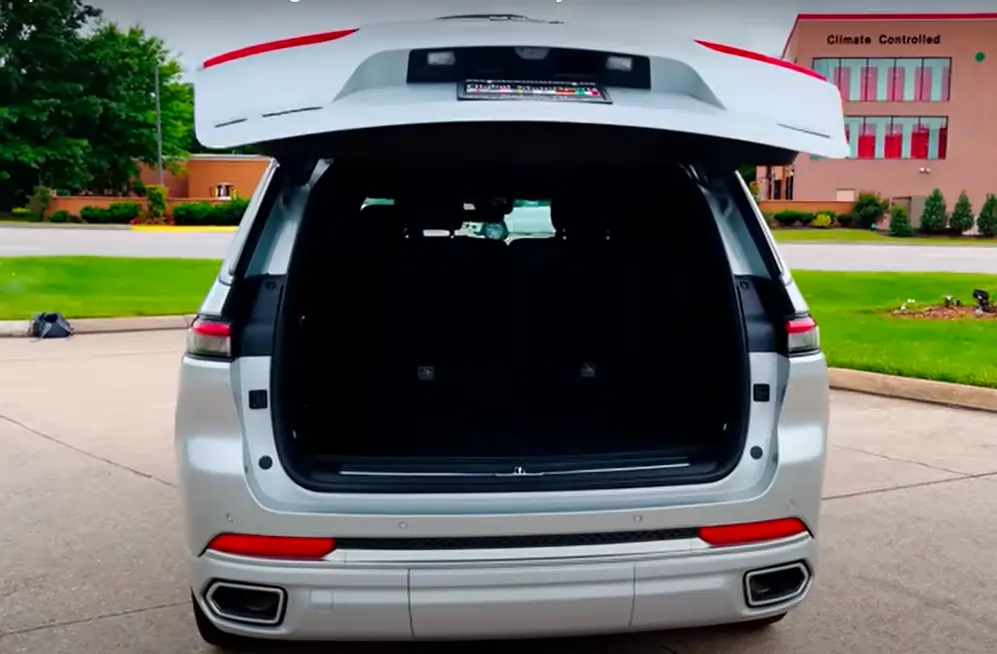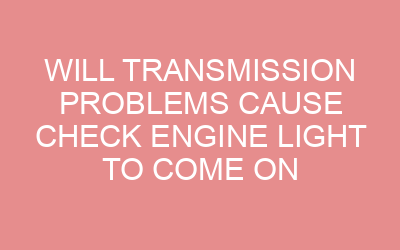The engine control module (ECM) plays a crucial role in a vehicle’s engine management system. It controls various sensors, including the oxygen (O2) sensors, to regulate the air-fuel mixture for optimal engine performance. However, there may be times when you need to delete the O2 sensor data from the ECM, such as after installing aftermarket headers or catalysts. Deleting the O2 sensors properly is key to avoiding engine issues like power loss, poor mileage, and check engine lights.
This comprehensive guide will walk you through everything you need to know about how to delete O2 sensors from the ECM.
Why Would You Need to Delete O2 Sensors from the ECM?
There are a few main reasons why you may need to delete the O2 sensor data from the ECM:
- Aftermarket Exhaust Modifications: Installing aftermarket headers, catalytic converters, or exhaust systems can change the way oxygen sensors function. This trips O2 sensor-related codes. Deleting the O2 sensors allows the ECM to essentially “reset” and adapt to the new exhaust setup.
- O2 Sensor Failure/Replacement: If an O2 sensor goes bad, replacing it and clearing the codes may not be enough. The ECM sometimes retains faulty data that will cause issues until it’s deleted. A full deletion clears out any lingering bad sensor data.
- ECM Tuning/Programming: Performance tunes and ECM programming often require wiping the entire ECM back to factory settings first. This gives the tuner a blank slate to optimize all the parameters. Part of this involves removing the old O2 sensor info.
- Diagnostic Troubleshooting: Mechanics may delete O2 sensors to narrow down driveability and emissions issues. By removing the sensor data, they can better isolate problems to the sensors themselves versus other systems.
- Prepping for Emissions Testing: In some cases, deleting the O2 sensors can help vehicles pass emissions inspections after other modifications. It erases any codes or data that would fail the test. This is an unethical practice, however, and should be avoided.
Overall, the most common reasons for removing O2 sensors from the ECM relate to exhaust modifications, sensor replacements, ECM tuning, and troubleshooting. It allows the engine management system to re-adapt to changes and start fresh with new sensor inputs.
How O2 Sensors Work with the ECM
O2 sensors, also known as oxygen or Lambda sensors, are a key component in the ECM’s fuel trim and engine management feedback loop. Here’s a quick overview of how they work with the ECM:
- Monitors Exhaust Gas: The O2 sensor is inserted into the exhaust stream, where it monitors the residual oxygen content in the exhaust gasses. A high oxygen reading indicates a lean mixture, while low oxygen indicates rich.
- Generates Voltage Signal: The sensor generates a corresponding voltage signal, typically cycling between 0 and 1 volt. This voltage tells the ECM whether the mixture is lean or rich compared to the ideal 14.7:1 air/fuel ratio.
- ECM Adjusts Injector Pulse Width: Based on the O2 sensor voltage, the ECM will shorten or lengthen the fuel injector pulse width to richen or lean out the mixture. This happens in real-time while driving to maintain the optimal ratio.
- “Closed Loop” Operation: When the engine is warmed up and running at a steady load, the system operates in closed loop mode. This means the ECM is constantly adjusting injector pulse width based on O2 sensor feedback.
- Learns Adaptive Fuel Trim Values: Over time, the ECM learns the slight deviations and needed fuel adjustments for that engine. It stores these adaptive trim values long-term for compensation.
- Monitors Catalytic Converter Function: The secondary downstream O2 sensors also allow the ECM to monitor catalytic converter operation based on oxygen levels before and after the cat.
Locating the ECM and O2 Sensors
Before deleting the O2 sensors from the ECM, you first need to locate both components:
Finding the ECM:
- The ECM is essentially the vehicle’s main computer, so it needs to be accessible but also protected. It’s typically located in the passenger compartment, under the dash or behind panels.
- On many models, the ECM is situated above the pedals or behind the glove box. It may be labeled as the PCM (Powertrain Control Module) or ECC (Engine Control Computer).
- Consult the factory service manual for your specific make/model/year for ECM location diagrams. Aftermarket repair manuals or online forums are also good resources.
- The ECM is connected to a wiring harness with multiple connectors. Unplugging these connectors is how you gain access to delete the O2 sensors.
Locating the O2 Sensors:
- Most vehicles have at least two O2 sensors – one before the catalytic converter (O2S1) and one after (O2S2). Some have additional sensors.
- The O2 sensors screw into exhaust manifold, catalytic converter, or exhaust pipe threaded fittings. Follow the exhaust system from the engine to find them.
- Bank 1 refers to the side of the engine with cylinder 1. Bank 2 is the opposite side. O2 sensors are numbered based on their bank and whether they are upstream or downstream.
- Check service manuals for O2 sensor locations and wiring diagrams for your vehicle’s specific engine. This ensures you access and delete the correct sensors from the ECM.
Equipment Needed
You’ll need some specialized equipment to delete O2 sensor data from the ECM. Here are the key tools required:
- OBD2 Scanner Tool: This connects to the ECM’s OBD2 diagnostics port, usually under the dash. Allows access to view and clear O2 sensor data. Mid-range scan tools or those with reprogramming ability are best.
- Jumper Wires: Used to ground signals during the deletion process on some ECM systems. Need male and female ends to jumper pins.
- Soldering Iron and Solder: May be required to modify wiring to ground sensor signals.
- Piggyback Connectors: Makes it easier to intercept sensor connections without cutting factory harnesses. Useful on some applications.
- Voltmeter/Multimeter: Essential for testing signals to ensure sensors are properly grounded or disconnected before reflashing ECM.
- 10mm Wrench or Socket: Removes upstream O2 sensors from exhaust manifold. Allow sensors to fully cool before removing.
- 22mm Wrench or O2 Socket: Fits downstream O2 sensors in exhaust pipe. Use anti-seize on threads when reinstalling.
- Extension Wire Harness: Extends O2 sensor wiring for ease of modification. Use proper gauge automotive wire.
- Factory Service Manual: Provides O2 sensor pinouts, connector and wire colors, locations, and diagrams for the specific vehicle.
- Computer and ECM Flash Tuning Software: Needed to reprogram the ECM once sensors are deleted. Follow software guidance.
- Battery Charger: Maintains steady voltage to ECM during flash reprogramming process. Prevents data corruption.
Working on the ECM and O2 sensors requires care to avoid damaging components or introducing problems from faulty deletion procedures. Having the proper tools for the job is critical before getting started.
How to Delete O2 Sensors – Basic Process
The steps for removing O2 sensors from the ECM vary between systems, but generally follow this basic process:
- Disconnect the Battery – Protects the ECM during the process and resets it to “blank” state.
- Locate ECM and O2 Sensor Connectors – Use diagrams to access wiring harness plugs.
- Unplug O2 Sensors – Removes signal input to ECM during deletion process.
- Modify Sensor Wiring – Grounds or extends wires depending on technique.
- Reconnect Sensors – May remain grounded/disconnected for ECM reprogramming.
- Access ECM via OBD2 Port – Use a quality scan tool connected to diagnostics plug.
- Clear O2 Sensor Codes/Data – Deletes any faulty codes or sensor readings in ECM.
- Perform ECM Reprogramming – Flashes modified software tuned for removed sensors.
- Test New Program – Confirm check engine light does not return and engine runs smoothly.
- Button up Wiring – Undo any pin jumping or extended wires. Plug all connectors back in.
- Reinstall Sensors – Screw upstream and downstream O2’s back into exhaust.
- Reconnect Battery – Restore power to ECM and allow adaptive values to reset.
The specific methods vary, but this gives a general workflow. Taking proper precautions and following the steps carefully is key to successfully removing the O2 sensors from the ECM.
Pre-1996 OBD1 ECM Sensor Deletion
On older pre-1996 OBD1 EFI-equipped vehicles, the procedure for removing O2 sensors from the ECM involved simple grounding of the sensor signal wires. Here is an overview:
- Access ECM Wire Harness – Unplug connector to expose wires. Locate O2 sensor signal wires using pinouts.
- Extend Wires – Attach additional length of wire to reach the grounded surface for the deletion process.
- Disconnect Sensors – Unscrew upstream and downstream O2’s from exhaust to deactivate.
- Ground Signal Wires – Use jumper wire to connect O2 signal pins directly to vehicle ground.
- Check Voltage – Meter should read 0V on the grounded sensor wires with the key on engine off.
- Modify ECM Programming – Erasable PROM chip allows tuners to remove O2 sensor parameters.
- Flash ECM – Install reprogrammed chip and reconnect ECM harness once sensors are grounded.
- Start Engine – Check lights stay off and engine runs without issue.
- Remove Grounding – Disconnect jumper wires from sensor pins once ECM flashing completes.
- Reinstall Sensors – Screw upstream and downstream O2’s back into exhaust system.
- Reset Adaptives – Drive through warm up cycles to reset ECM adaptive fuel tables.
This approach worked well for early EFI systems with limited sensor integration in the ECM programming. Jumper wire grounding provides a simple way to deactivate the O2 sensor inputs during reprogramming.
Post-1996 OBD2 Compliant ECM Modifications
Deleting O2 sensors on 1996-and-newer OBD2-compliant vehicles involves more intricate ECM reprogramming. Here are the steps:
- Determine ECM Type – Flash or lockable EPROM chips require different modification techniques.
- Obtain Tuning Software – Pro-level packages allow full customization of engine operating parameters.
- Access ECM Wire Harness – Unplug connector to identify sensor signal wires based on diagrams.
- Extend Wiring – Lengthen sensor wires for external modification during flashing process.
- Disconnect Sensors – Unscrew and remove upstream and downstream O2 sensors from exhaust.
- Jumper Pins or Cut Wires – Short signal wires to ground or cut them completely to deactivate sensors.
- Connect Battery Maintainer – Maintains steady ECM voltage during flash procedure, preventing corruption.
- Load Custom Tune – Modify sensor scaling, filter, and correction factors in software tuning interface.
- Flash ECM – Send modified program to the ECM through the OBD2 port until complete.
- Clear Codes and Resets – Use scanner tools to erase any check engine lights or issues.
- Verify Programming – Start engine and confirm sensors remain inactive and no codes return.
- Remove Grounding/Jumper Wires – Restore original wiring once ECM sensor deletion successful.
- Reinstall O2 Sensors – Screw upstream and downstream sensors back into exhaust.
The introduction of OBD2 diagnostics necessitates more advanced ECM reprogramming methods to remove sensors. Proper modifications prevent error codes or drivability issues after deletion.
Tuning Considerations After Deleting O2 Sensors
When deleting the O2 sensors, the ECM loses its primary feedback control over fuel mixture. This requires further tuning considerations:
Fuel Mapping:
- The ECM’s fuel map and injector pulse widths must be optimized in the tune to provide sufficient fueling across the engine’s rpm and load range.
- Additional fuel enrichment may be needed to compensate for the absent sensors.
- There is less margin for error without the O2’s regulating short and long term fuel trim.
Knock Control:
- O2 sensors help the ECM detect engine-damaging knock and adjust timing accordingly. Alternative strategies must be used.
- Knock sensors allow the ECM to still retard timing if detonation is present.
- Conservative base timing maps prevent excess advance without O2 feedback.
Idle Stability:
- Deleting the O2’s can impact fast idle and cold start fueling accuracy. Additional tuning at idle may be required.
- IAC valve control and closed loop strategies must be modified for steady idle without the sensors.
Catalytic Converter:
- O2 sensors help monitor cat efficiency. With sensors removed, any loss of conversion may go unchecked.
- Post-cat O2 deletion limits the ECM’s ability to diagnose cat failures through oxygen storage monitoring.
So while the engine will run without O2 sensors, optimal performance, drivability, and knock protection require extra fuel and timing mapping precautions. The modifications depend on the overall engine setup and ECM capabilities.
Troubleshooting Issues after O2 Sensor Deletion
Some potential issues can arise after deleting O2 sensors from the ECM. Here are tips for troubleshooting:
Check Engine Light Returns:
- If check engine light comes back on soon after deletion, the ECM may not have fully reset adaptives or may still have faulty data. Clear codes and perform ECM reset again.
- Check all sensor wiring modifications – any incomplete jumper/grounds can still send erroneous signals.
- Try a fresh flash with updated tuning software better optimized for the removed sensors.
Engine Runs Too Lean:
- Without O2 input, fuel maps may need enrichment across higher loads if the engine stumbles or feels gutless.
- Verify fuel pressure and injector flow – leaks or decreased output can cause lean condition.
- Check for vacuum leaks downstream of the mass airflow sensor causing excess air intake.
Engine Runs Too Rich:
- Additional O2 sensor filtering in tuning software may help richen up short term fuel trim at lower rpm/loads.
- Leaking fuel injectors or pressure regulators can contribute to an overly rich mixture with sensors deleted.
- Make sure the MAF sensor is reading accurately and hasn’t picked up debris or oil fouling.
Severe knock/detonation:
- Aggressive timing combined with absent O2 feedback can lead to harmful engine knock.
- Modify ignition timing maps to be more conservative if knock is occurring at specific rpm ranges.
- Installing a quality knock sensor and tuning it aggressively is strongly advised for knock protection.
Adding Additional Fuel Control after O2 Removal
One method to improve fueling accuracy after deleting the O2 sensors is adding additional fuel control hardware:
Wideband Air Fuel Gauge:
- Provides real time monitoring of exhaust air/fuel ratios using a dedicated wideband O2 sensor.
- Allows the tuner to see exactly how rich or lean the engine is running during tuning as well as normal driving.
- Controller displays AF ratios numerically and can data log them for analysis.
- Works in concert with ECM’s remaining MAP, MAF, and throttle position sensor inputs.
Fuel Pressure Regulator:
- High quality FPR maintains rock-solid fuel rail pressure as injector demands change.
- Switchable dual-stage designs allow for easy tuning fuel map adjustments.
- Matching high flow fuel injectors are needed to take advantage of increased pressure capacity.
Flex Fuel Sensor:
- Enables ECM compensation for different ethanol content in gasoline. Keeps fueling accurate.
- Most FF kits include an O2 controller for added measurement.
- Allows map switching for specific fuel mixes like E85 or race gas blends.
While added components increase system complexity, they give real-time fuel data and control in the absence of O2 sensor feedback to the ECM.
Trouble Passing Emissions After Deleting O2 Sensors
Removing the O2 sensors can potentially cause issues passing emissions testing. Here are some troubleshooting tips:
Reinstall Missing Sensors:
- Easiest option is to reinstall any deleted pre or post-cat O2 sensors with proper functioning signals. May require further tuning work.
- Allows emissions systems to function as originally designed and tested for.
Replace Faulty Catalytic Converters:
- Removed O2 sensors often accompany cat deletes/test pipes. Replacing cats may be required for emissions.
- Legitimate high flow cats maintaining EO numbers are a performance-friendly option.
Retuning:
- Modified tuning that’s too lean can lead to excess NOx levels. Rich tuning causes high HC/CO.
- Optimizing fueling for emissions testing operating ranges through data logging and mapping can help dial it in.
Pre-Testing:
- Use a quality 3 or 5-gas analyzer to determine problem emissions before testing. Helps pinpoint tuning fixes.
- Make adjustments and retest until readiness monitors are set and tailpipe numbers are in spec.
Emissions deletions like removing O2 sensors are not legal for street driven vehicles. For race only apps, temporarily re-installing components may be the best solution for passing testing.
Ethics of Deleting O2 Sensors from ECMs
While there may be legitimate technical reasons for removing O2 sensors from the ECM, doing so for emissions defeat or deceptive reasons raises some ethical concerns:
Here is the continuation of the article:
- Circumventing emissions equipment violates both federal and state laws. Tampering with emissions systems on street vehicles is illegal and can lead to substantial fines or penalties if caught.
- Deleting O2 sensors often accompanies catalytic converter removal as well. This dramatically increases tailpipe emissions of pollutants like NOx, CO, and particulates.
- Excess emissions contribute to poorer air quality and can have negative health effects. Environmentally conscious tuning should aim to avoid increases.
- ECM modifications to remove sensors are detectable by regulators. Flash countermeasures or ECU checksums can potentially identify unapproved changes.
- There are legitimate performance reasons to want to tune an engine beyond stock capabilities. This should be done through careful mapping, not simply by deleting sensors.
- Well-designed high flow cats, optimized fueling, and timing can yield power gains while still retaining effective emissions control.
- Consider track-only use if emissions equipment needs to be removed for max performance. Keeping street vehicles emissions compliant demonstrates social responsibility.
While ECM modification itself is not unethical, the motivations and methods behind some O2 sensor deletion procedures are dubious at best. There are ways to tune responsibly – sticking to these shows respect for the environment and regulators.
Frequently Ask Question How to delete o2 Sensor from ECM
Is deleting O2 sensors legal?
Deleting O2 sensors from a vehicle’s ECM is not legal for any street-driven vehicle. Federal and state laws prohibit tampering with or disabling any component of a vehicle’s stock emissions control systems. Removing the upstream or downstream oxygen sensors falls under this definition of tampering.
The Clean Air Act prohibits defeating, rendering inoperative, or removing any emissions device or component after vehicle manufacture. Individual states often have even stricter laws concerning emissions modifications. Getting caught driving a vehicle with deleted O2 sensors could result in fines, mandatory reinstatement of the sensors, or even having the vehicle impounded.
That said, the laws are primarily focused on emissions equipment modifications done for the purpose of deceiving regulators during testing or avoiding emissions laws. They are not intended to prevent all ECM modifications or tuning in general.
There are some legitimate reasons mechanics and tuners might need to remove O2 sensor data from the ECM temporarily, such as troubleshooting an engine issue or tuning for off-road use only. The intent behind the modifications makes the difference in whether it would be a legal procedure.
How much does it cost to delete O2 sensors?
The cost to delete O2 sensors from a vehicle’s ECM can range quite a bit based on the year, make, model, and complexity of the overall job:
- For simple pre-OBDII applications, DIY jumper wires and an EPROM chip programming kit can cost as little as $50-100 in parts. The labor is straightforward as well.
- For more recent OBD2 compliant vehicles, expect closer to $400-600 in parts and tuning tools if attempting it yourself. This includes ECM flash software or hardware, OBD tools, and wiring components. Add another $200-300 for dyno tuning time.
- If paying a performance shop to handle the full deletion process, total costs typically end up between $800-1500. This covers the technician’s specialized tuning expertise, shop supplies/equipment, tuning time, and licensing fees for commercial software tools.
- Additional expenses may be required beyond just the sensor removal itself. Catalytic converter or header upgrades, added fuel control equipment, and post-tuning adjustments can all drive up the price.
- Rare or exotic vehicles often require even more expensive dealer-level tuning tools. Shop rates for these are typically over $150 per hour, so costs add up fast.
As with most automotive work, doing it yourself will be cheaper than paying a professional. But the expertise and tools shops provide are worthwhile, especially for modern EFI systems. And remember deleting O2 sensors on street vehicles for emissions defeat is illegal, so there is risk involved as well. For race or off-road use, shop tuning is recommended to do it properly.
Do I need a tune after deleting O2 sensors?
Yes, reprogramming the ECM with a custom tune optimized for the removed O2 sensors is mandatory. Simply deleting the sensor data without tuning will almost certainly lead to drivability issues like:
- Check engine lights for sensor-related trouble codes
- Lean/rich fueling causing power loss or possible engine damage
- Poor idle quality and stalling
- Hesitation, surging, or irregular throttle response
- Excessive spark knock or detonation under load
This is because the ECM relies on continuous O2 sensor feedback to provide closed-loop fuel metering and ignition timing advance. Removing the sensors leaves the ECM “blind” without this vital input.
The tune edits maps for:
- Fuel injection and pulse width – optimizes fuel delivery across all rpm and loads without the O2’s regulating short and long term fuel trim. More overall enrichment is usually required.
- Base ignition timing – removes any compensation tables relying on O2 state to prevent destructive knock.
- Idle speed control – modifies IAC tables for steady idle without the sensors.
- Knock detection and timing retard if applicable – makes the system less knock-prone.
- Catalytic converter efficiency monitoring – disables any O2-based diagnostics for the downstream sensors.
- Sensor diagnostics – eliminates any remaining sensor checks that could trigger codes.
Properly mapping these parameters requires extensive dyno and street tuning work, especially to compensate for the absent closed loop fuel control. So yes, a quality custom calibration optimized for the sensor removal is mandatory anytime O2’s are deleted. An off-the-shelf tune will not suffice.
Conclusion
In summary, deleting the oxygen sensors from a vehicle’s ECM is a complex process requiring specialized tools and tuning expertise. While there are some legitimate technical reasons for removal, doing so strictly for emissions defeat is unethical and illegal. On pre-OBD1 vehicles, jumper grounding of the sensor wires combined with EPROM chip reprogramming can remove them relatively simply.
But for modern OBD2 EFI systems, flashing the ECM via the diagnostics port is required along with sensor signal modifications. However it’s accomplished, a custom engine management tune optimized for the absent sensors is then mandatory. Additional supporting mods like catalytic converters and fuel control should also be considered after deletion.
When done properly according to the steps outlined, the generation of fault codes can be avoided and the engine will run well without the O2 sensor inputs. Just be aware of the legal and ethical implications before modifying any emissions components on street-driven vehicles.














Leave a Reply